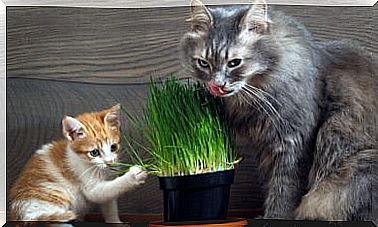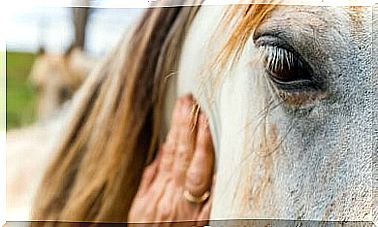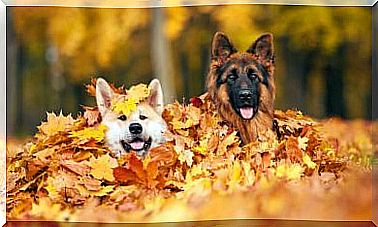Horses Can Interpret Human Expressions And Emotions

Equines are very receptive and sensitive animals to the stimuli of their environment. Horses can interpret our expressions and, along with the tone of voice, perceive human emotions.
How can horses interpret emotions?
Horses are capable of interpreting our emotions. Because they are social animals, they have learned to identify and communicate with their fellows and humans, with whom they have lived for thousands of years.
Not only do they help the facial expression of the person, but they integrate this with the tone of voice, whether they already know that person or not. They are able to relate a face with a friendly expression, a calm tone of voice, or an angry face with growls or screams.
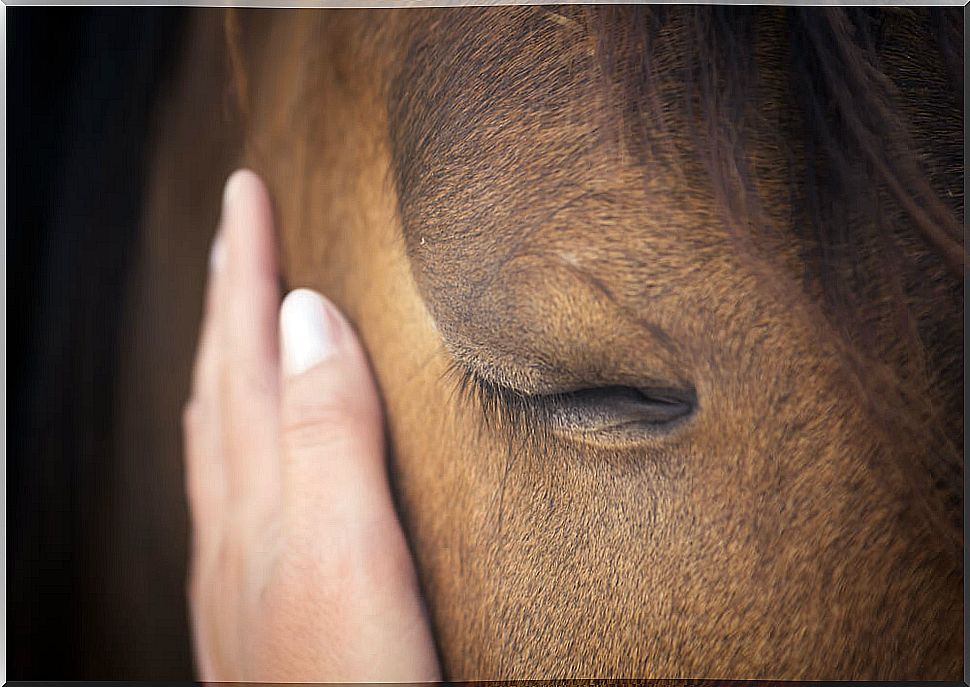
Faced with negative stimuli, such as an angry face, horses turn their heads and look askance with the left eye, since it is their right brain that processes the threat signals. Their heart rate also accelerates and they are restless, with clear signs of stress. This specialization of the brain helps them to anticipate negative situations.
Horses are communicative animals
In the wild, horses usually live in groups led by a mare and are prey to other animals, so they have developed a language between them to communicate.
The main form of communication of these equines is visual. Horses can interpret the body language of their companions, by the position of their ears, head, legs and body in general. Auditory communication is also very important.
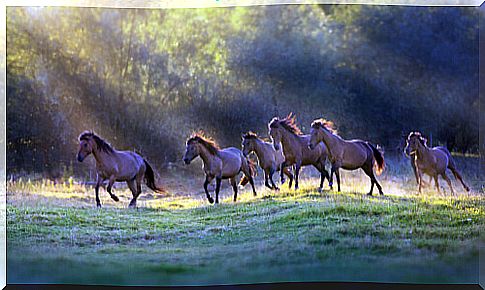
Horses neigh, wheeze, roar, and make a series of guttural sounds to convey different sensations:
- Communicate your location to the rest of the group.
- Warn other fellow humans of a danger.
- Welcome another individual.
- Convey affection or happiness.
- As a sign of courtship.
- To find the hatchlings.
Yes, horses can interpret emotions
We can communicate with the horse through facial and body language and the tone of our voice, since horses can interpret human emotions. This fact is what has guided Monty Roberts, known as the man who listens to horses, throughout his professional career .
Roberts is a famous horse trainer who is an expert in horsemanship, equestrian and natural dressage who has based all his work on communicating with the horse. In this way, it establishes a relationship of respect and understanding between the equid and the human, to leave behind concepts such as dominance or punishment, methods that only achieve fear and frustration in animals.
The Equine Language of Monty Roberts
His method is called join up (union) and follow up (accompaniment), and seeks to establish a voluntary association between the horse and the man, without the use of pain or force, in order to make the horse accept a mount , a bridle and a rider.
All this is not new. The language of the horse, called equs , is based on a system of signs and was already invented by the Indians of the Chikasaw tribe to later be used by riders around the world.
Three types of signs are the basic ones in this language: the body postures –which include the movements of the head, eyes, lips and ears–, the tail and the sounds. Roberts identified more than 170 gestures with which the human being can communicate with the horse.
As you can see, communication with the horse is a reciprocal action. Horse and human are both senders and receivers of information. The man, through his gestures, his posture and his voice make that the horses can interpret and respond with their state through the position of their ears, head and body, in addition to neighing.


